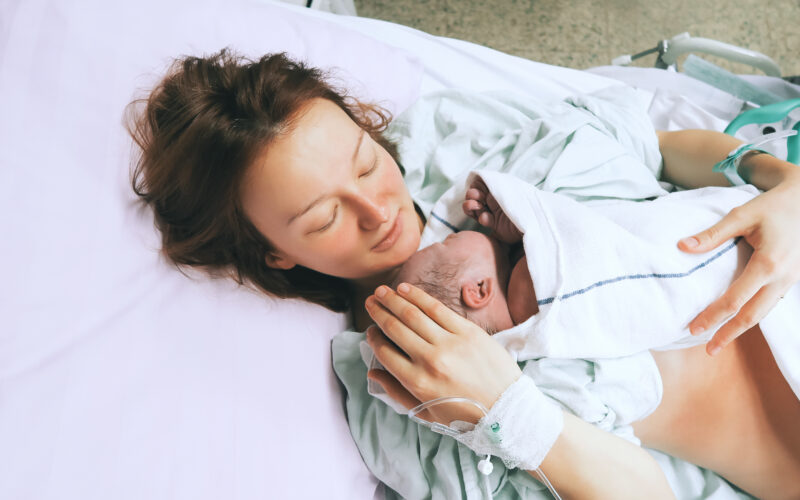A month before I delivered my firstborn, my dear friend had her fourth child. As I held my sweet new godson for the first time, my friend related her birth story from her hospital bed. “I’m so glad I won’t be doing that again for a while,” she half-joked, after she finished describing a long night of start-and-stall labor.
When my time came to deliver my son, I remember feeling the same way as I watched him sleep next to me after all of the commotion of labor was finally gone. I was thrilled he was there, and proud of all that my body had accomplished in growing and delivering him, but the labor pains were still fresh enough in my memory (and body) to want to give myself some time before I did “that” again.
It’s therefore unsurprising to me that newly-postpartum mothers are now being encouraged by their medical providers to have intrauterine devices (IUD) inserted into their uteruses immediately after delivery; even a woman who may have been on the fence about the decision to get an IUD might find her mind changed toward favoring several labor-free years after a particularly grueling labor or painful c-section is fresh in her mind.
And new research has shown that in order to prevent higher risk of IUD expulsion, the device must be inserted immediately after delivery—and they really do mean immediately, as an insertion performed even 10 minutes after delivery leads to higher rates of expulsion than those performed immediately or after 4 weeks.
There’s reason to believe that immediately after delivery is not the best time to be making long-term family-planning decisions. If a woman is proposed an IUD for the first time immediately after delivery, there is a risk of physician coercion; there’s also reason to question whether the patient can provide true informed consent in that highly charged context that is right after giving birth. I would say such a decision would be unethical if the woman has not previously discussed the decision with her physician at length beforehand, deciding in advance that an IUD insertion is a part of her birth plan, if that is what the patient has decided upon.
The same study shows that if a woman does not want to have the IUD inserted immediately after delivery, she was must wait 4 or more weeks to have it inserted, or the risk of IUD expulsion can be as high as 30%, during the early postpartum weeks while the uterus continues to shrink down to pre-pregnancy size. Particularly if a woman is not breastfeeding, she could experience a return to fertility during the time before she has a chance to get the IUD inserted, and if so, could get pregnant if she engages in intercourse during that time. But considering most women who delivered vaginally are advised by their OB-GYN not to engage in sexual intercourse up to 6 weeks after, there’s little reason to rush.
For many, IUD insertions are no walk in the park. Stories of painful IUD insertions might encourage postpartum women to take advantage of their already-administered epidurals and pain meds to have an insertion immediately after delivery. In an article for TheOutline.com entitled “If Men Had to Get IUDs, They’d Get Epidurals and Hospital Stays,” author Casey Johnston notes:
I suspect at least part of the reason everyone downplays how bad IUD insertions can hurt is that they don’t want to put women off. . . . If you pay close attention, when you sign up, the description of what you are about to go through changes a lot from the day you make your appointment (“just a pinch for five years of no babies!”) to a few minutes before it happens (“one bad day, but still, five years of no babies!”) to after it’s done (“cramps and spotting for up to a month, but what will pull you through is remembering, five years of no babies!”). Being that neither the instructions nor the experience is consistent, even if the people for whom this operation is excruciatingly painful were a minority, it would be cruel to dismiss them as unfortunate outliers when we don’t do that for basically any other procedure.
Along with potentially painful, unmedicated insertions and risks of expulsion, IUDs also carry risks of infection and uterine perforation. Although these complications are rare, they can be very serious, and the hormonal IUDs (which is to say all of them, except for the non-hormonal copper ParaGuard) carry the risk of hormonal side effects akin to other forms of birth control like the Pill, the patch, or arm-insert. Meanwhile, even the non-hormonal copper IUD can lead to copper toxicity and disrupt the healthy functioning of the thyroid, a major organ in hormone regulation.
There is also anecdotal evidence that some women have had trouble getting their physicians to remove their IUDs (even if they are experiencing negative side effects) or getting insurance to pay for the removal procedure. As a result, some doctors are leaving IUD strings longer so that women can remove them at home, although women are strongly recommended against doing so.
Less Invasive and More Natural: Fertility Awareness-Based Methods
Fortunately for me and my husband (and my friend and her husband), we already had a plan in place for our postpartum child-spacing needs: Fertility Awareness-Based Methods (FABM), also known as Natural Family Planning (NFP). Our strong conviction in its efficacy made it easy to turn down other methods of birth control when the nurse came in for “the talk” (you know the one, postpartum mamas, where you’re grilled in your emotionally and physically vulnerable state, about how you’re going to prevent having to do “that” again anytime soon) after all of the hubbub of labor and delivery dies down.
For couples who take the time to be properly trained in one of the major methods of NFP (and especially if they are breastfeeding postpartum), there is no reason to fear that NFP is any less effective at spacing pregnancies than an IUD is. In fact, many NFP methods can be just as effective as the highly-effective IUD (up to 99%, depending on the method), they come without any of the potentially painful or dangerous side-effects associated with the IUD, and they allow couples to space pregnancies without any of the concerns associated with IUD insertion, expulsion, or removal.







